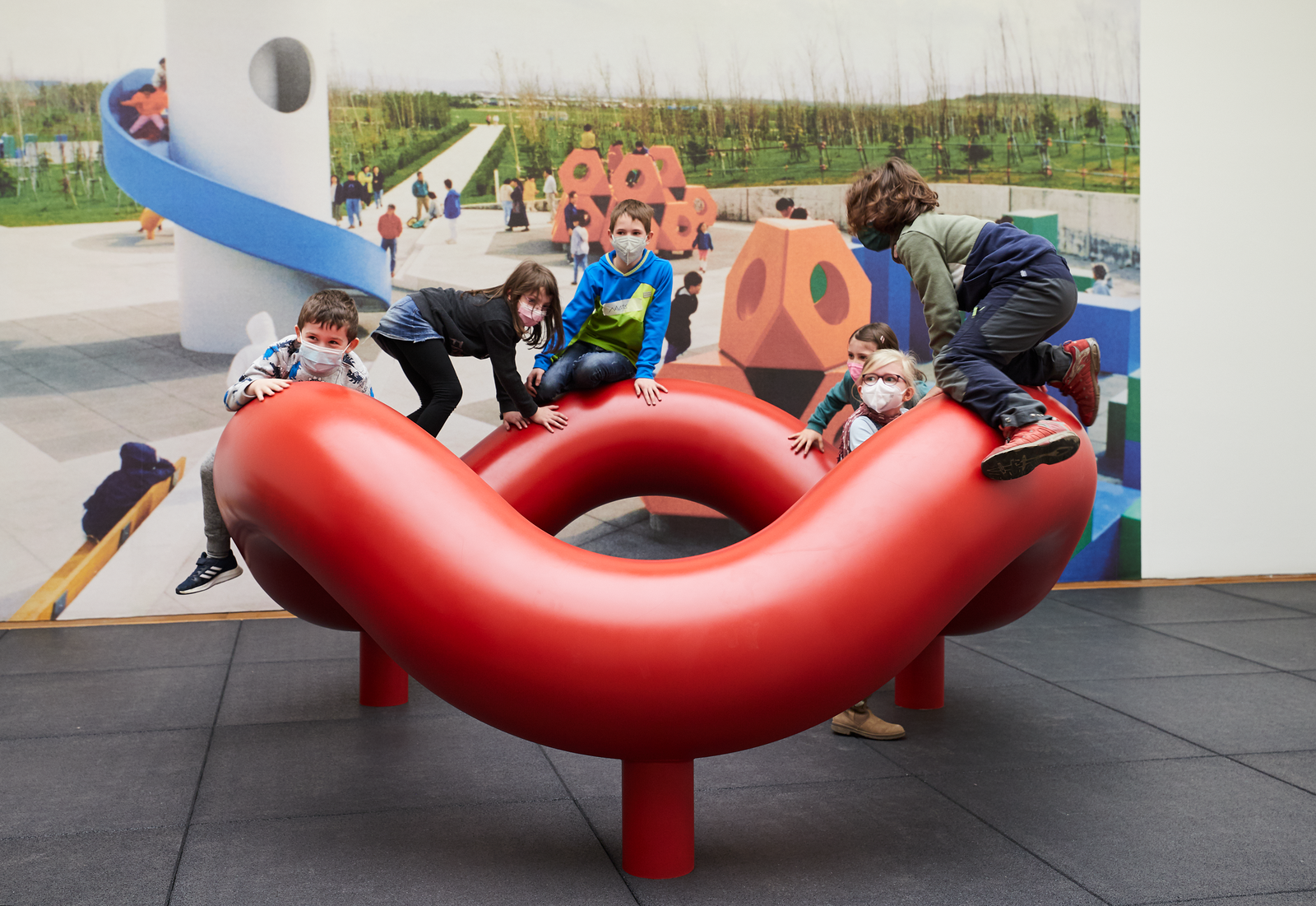March 26–July 31, 2022
Heinrich-Böll-Platz
50667 Cologne
Germany
Hours: Tuesday–Sunday 10am–6pm
T +49 221 22126165
info@museum-ludwig.de
Isamu Noguchi (b. 1904 in Los Angeles, d. 1988 in New York) is a great 20th-century sculptor, who is often better known for his iconic collaborations and design projects outside the strict domain of the fine arts, such as his coffee table for Hermann Miller, dance sets for Martha Graham, and Akari lights. His work was shaped by an expanded conception of sculpture and the question of human beings’ relationship to the earth, as well as his fascination with materials and technology.
Noguchi’s thinking was transgressive, transnational, and radically interdisciplinary in every regard. From the 1920s to the 1980s he created monuments with a political message, light objects, stage sets, playgrounds, and gardens, always in pursuit of the connection between art and everyday life.
The Museum Ludwig is now hosting the first comprehensive retrospective in Europe in over 20 years on the Japanese American sculptor Isamu Noguchi. It covers all of Noguchi’s creative periods and practices with 150 works and present him as an experimental and politically engaged artist. The exhibition was organized and curated by the Museum Ludwig in Cologne, the Zentrum Paul Klee in Bern (September 23, 2022–January 8, 2023), and the Barbican in London (September 30, 2021–January 23, 2022), in partnership with LaM – Lille Métropole Musée d’art moderne, d’art contemporain et d’art brut (April 6–July 16, 2023). The exhibition would not have been possible without the collaboration of the Isamu Noguchi Foundation and Garden Museum, New York.
The retrospective begins with portraits—heads and figures, abstract and realistic, like a panorama composed of a wide variety of media, social contacts around the world, and artistic views. Featured are a rare self-portrait as a boy with blue eyes, along with heads of Martha Graham and Buckminster Fuller or for example Brâncuși, Noguchi’s uncle Takagi or the writer Tara Pandit.
The focal point of the exhibition is Noguchi’s Surrealist Interlocking Sculptures from the 1940s. Some of these works recall human bodies with elements like limp limbs or bones. They combine playful composition and painful fragmentation.
The foundation of his life and work was his engagement with the social and political questions of his time. His opposition to racism and violence as well as questions of identity and belonging are reflected in many of Noguchi’s artworks. In others, the memories of pain and oppression become almost invisible. 120,000 Americans of Japanese descent were imprisoned after the Japanese attack on Pearl Harbor in 1942, Noguchi entered one of the camps in the Arizona desert. Still decades later, his sculptures continued to bear the memory of the discrimination he experienced as a Japanese American.
The rich facets of his work include his public and political art projects from the 1930s, dance collaborations, ceramics, as well as public works and plans for cities from Jerusalem and Hiroshima, Munich, Bologna, Paris, and Delhi.
The last room shows Noguchi’s design for Sculpture to Be Seen from Mars (Memorial to Man). The work was conceived in 1947, two years after the atomic bombs were dropped on Hiroshima and Nagasaki, but it was never realized. Since his early playground designs, Noguchi viewed the earth as an artistic material. In Sculpture to Be Seen from Mars (Memorial to Man) he presents an extraterrestrial perspective on our planet Earth. A human face appears on the surface of the planet, a reminder of the fact that humanity shaped the earth with culture but also destroyed it.
The exhibition received generous funding from the Terra Foundation for American Art, the Peter and Irene Ludwig Foundation, the REWE Group, the International Society Museum Ludwig and the Gesellschaft für Moderne Kunst am Museum Ludwig e.V., the foundation “Der bewohnte Garten,” the Beatrix Lichtken Foundation, and the Goldstein Group.
Curator: Rita Kersting
Social media
The Museum Ludwig will be posting about the exhibition on its social media channels with the hashtag #MLxNoguchi.


